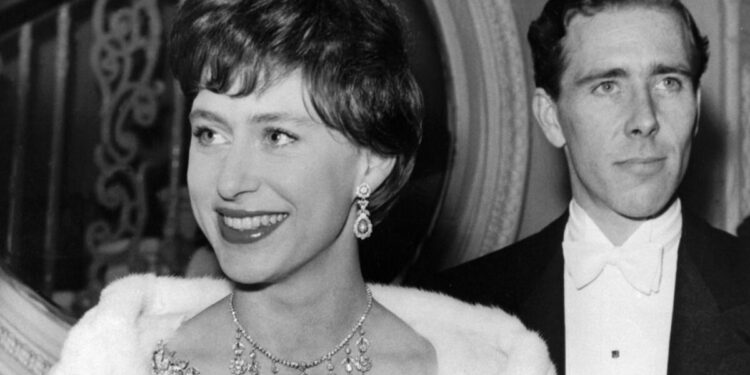Princess Margaret, Countess of Snowdon (1930-2002), was the younger sister of Queen Elizabeth II and a figure who captivated the British public with her glamorous lifestyle and unconventional approach to royal life. Born into privilege as the daughter of King George VI and Queen Elizabeth, Margaret came to embody both the grandeur and constraints of the British monarchy during a period of significant social change.
Throughout her life, Margaret walked a delicate line between royal duty and personal freedom. Her most notable moment of conflict came in 1955 when she fell in love with Group Captain Peter Townsend, a divorced Royal Air Force officer. The Church of England’s stance against remarriage after divorce, combined with governmental pressure, forced Margaret to choose between love and her royal position. Her decision to ultimately end the relationship demonstrated the personal sacrifices demanded by her royal status.
In 1960, Margaret married photographer Antony Armstrong-Jones, later Lord Snowdon, in what seemed a modern union between royalty and bohemian artistry. The marriage produced two children, David and Sarah, but eventually ended in divorce in 1978, making Margaret the first senior royal to divorce since Henry VIII.
Known for her sharp wit and sophisticated taste, Margaret was a patron of the arts and a fixture of London’s high society. She moved effortlessly between royal ceremonies and artistic circles, counting celebrities and cultural figures among her close friends. Her parties at her home on Mustique became legendary, as did her glamorous fashion choices and jewelry collection.
However, Margaret’s later years were marked by health challenges. A heavy smoker throughout her adult life, she suffered several strokes and underwent lung surgery in 1985. Despite these setbacks, she continued to carry out royal duties when possible, though with decreasing frequency.
Princess Margaret’s legacy is complex. Critics viewed her as a privileged royal who perhaps never fully embraced her responsibilities, while supporters saw her as a woman trapped between tradition and modernity, trying to forge her own path within the confines of royal protocol. Her struggles with love, marriage, and personal freedom resonated with many who saw in her story the broader tensions between individual happiness and institutional duty.
When she passed away in 2002, Margaret left behind a changed monarchy, one that had begun to adapt to modern times – partly due to the precedents she had set through her own life choices. Her story remains a compelling example of how even those born into the highest echelons of society must navigate between personal desires and public expectations.
newshub



Recent Comments